
The following outline is provided as an overview and topical guide to space science:

Astrophysics is a science that employs the methods and principles of physics and chemistry in the study of astronomical objects and phenomena. As one of the founders of the discipline, James Keeler, said, Astrophysics "seeks to ascertain the nature of the heavenly bodies, rather than their positions or motions in space–what they are, rather than where they are." Among the subjects studied are the Sun, other stars, galaxies, extrasolar planets, the interstellar medium and the cosmic microwave background. Emissions from these objects are examined across all parts of the electromagnetic spectrum, and the properties examined include luminosity, density, temperature, and chemical composition. Because astrophysics is a very broad subject, astrophysicists apply concepts and methods from many disciplines of physics, including classical mechanics, electromagnetism, statistical mechanics, thermodynamics, quantum mechanics, relativity, nuclear and particle physics, and atomic and molecular physics.
The Max Planck Institute for Extraterrestrial Physics is part of the Max Planck Society, located in Garching, near Munich, Germany. In 1991 the Max Planck Institute for Physics and Astrophysics split up into the Max Planck Institute for Extraterrestrial Physics, the Max Planck Institute for Physics and the Max Planck Institute for Astrophysics. The Max Planck Institute for Extraterrestrial Physics was founded as sub-institute in 1963. The scientific activities of the institute are mostly devoted to astrophysics with telescopes orbiting in space. A large amount of the resources are spent for studying black holes in the galaxy and in the remote universe.

Svein Rosseland was a Norwegian astrophysicist and a pioneer in the field of theoretical astrophysics.

The Smithsonian Astrophysical Observatory (SAO) is a research institute of the Smithsonian Institution, concentrating on astrophysical studies including galactic and extragalactic astronomy, cosmology, solar, earth and planetary sciences, theory and instrumentation, using observations at wavelengths from the highest energy gamma rays to the radio, along with gravitational waves. Established in Washington, D.C., in 1890, the SAO moved its headquarters in 1955 to Cambridge, Massachusetts, where its research is a collaboration with the Harvard College Observatory (HCO) and the Harvard University Department of Astronomy. In 1973, the Smithsonian and Harvard formalized the collaboration as the Center for Astrophysics | Harvard & Smithsonian (CfA) under a single Director.

The Center for Astrophysics | Harvard & Smithsonian (CfA), previously known as the Harvard–Smithsonian Center for Astrophysics, is an astrophysics research institute jointly operated by the Harvard College Observatory and Smithsonian Astrophysical Observatory. Founded in 1973 and headquartered in Cambridge, Massachusetts, United States, the CfA leads a broad program of research in astronomy, astrophysics, Earth and space sciences, as well as science education. The CfA either leads or participates in the development and operations of more than fifteen ground- and space-based astronomical research observatories across the electromagnetic spectrum, including the forthcoming Giant Magellan Telescope (GMT) and the Chandra X-ray Observatory, one of NASA's Great Observatories.

The Institute of Astronomy (IoA) is the largest of the three astronomy departments in the University of Cambridge, and one of the largest astronomy sites in the United Kingdom. Around 180 academics, postdocs, visitors and assistant staff work at the department.

The Indian Institute of Astrophysics (IIA), with its headquarters in Bengaluru, is an autonomous research institute wholly funded by the Department of Science and Technology, Government of India. IIA conducts research primarily in the areas of astronomy, astrophysics and related fields.
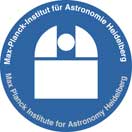
The Max-Planck-Institut für Astronomie is a research institute of the Max Planck Society (MPG). It is located in Heidelberg, Baden-Württemberg, Germany near the top of the Königstuhl, adjacent to the historic Landessternwarte Heidelberg-Königstuhl astronomical observatory. The institute primarily conducts basic research in the natural sciences in the field of astronomy.
Solar physics is the branch of astrophysics that specializes in the study of the Sun. It deals with detailed measurements that are possible only for our closest star. It intersects with many disciplines of pure physics, astrophysics, and computer science, including fluid dynamics, plasma physics including magnetohydrodynamics, seismology, particle physics, atomic physics, nuclear physics, stellar evolution, space physics, spectroscopy, radiative transfer, applied optics, signal processing, computer vision, computational physics, stellar physics and solar astronomy.

Konkoly Observatory is an astronomical observatory located in Budapest, Hungary is part of the Research Centre for Astronomy and Earth Sciences and belongs to the Eötvös Loránd Kutatási Hálózat. It was founded in 1871 by Hungarian astronomer Miklós Konkoly-Thege (1842–1916) as a private observatory, and was donated to the state in 1899. Konkoly Observatory, officially known as ELKH CSFK Konkoly Thege Miklós Csillagászati Intézet in Hungarian, is the largest astronomical research institute in Hungary, and hosts the largest telescopes in the country. The Observatory has more than 60 researchers, a quarter of them are non-Hungarian.

Astronomical Observatory of Trieste is an astronomical center of studies located in the city of Trieste in northern Italy.
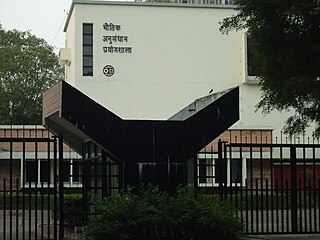
The Physical Research Laboratory is a National Research Institute for space and allied sciences, supported mainly by Department of Space, Government of India. This research laboratory has ongoing research programmes in astronomy and astrophysics, atmospheric sciences and aeronomy, planetary and geosciences, Earth sciences, Solar System studies and theoretical physics. It also manages the Udaipur Solar Observatory and Mount Abu InfraRed Observatory. The PRL is located in Ahmedabad.
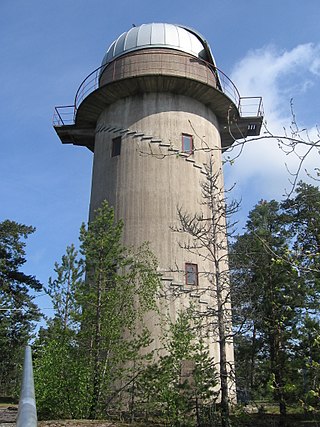
Tuorla Observatory is the Department of Astronomy at the University of Turku, southwest Finland. It is the largest astronomical research institute in Finland. Together with the Space Research Laboratory at the Physics Department of the University of Turku, it forms the Väisälä Institute of Space Physics and Astronomy (VISPA).

The Jodrell Bank Centre for Astrophysics at the University of Manchester, is among the largest astrophysics groups in the UK. It includes the Jodrell Bank Observatory, the MERLIN/VLBI National Facility, and the Jodrell Bank Visitor Centre. The centre was formed after the merger of the Victoria University of Manchester and UMIST which brought two astronomy groups together. The Jodrell Bank site also hosts the headquarters of the SKA Observatory (SKAO) - the International Governmental Organisation (IGO) tasked with the delivery and operation of the Square Kilometre Array, created on the signing of the Rome Convention in 2019. The SKA will be the largest telescope in the world - construction is expected to start at the end of this decade.
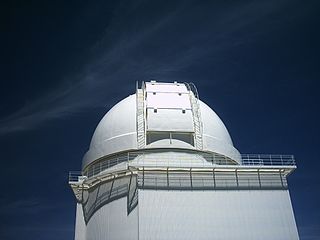
The Institute of Astrophysics of Andalusia is a research institute funded by the High Council of Scientific Research of the Spanish government Consejo Superior de Investigaciones Científicas (CSIC), and is located in Granada, Andalusia, Spain. IAA activities are related to research in the field of astrophysics, and instrument development both for ground-based telescopes and for space missions. Scientific research at the Institute covers the Solar System, star formation, stellar structure and evolution, galaxy formation and evolution and cosmology. The IAA was created as a CSIC research institute in July 1975. Presently, the IAA operates the Sierra Nevada Observatory, and the Calar Alto Observatory.
The Oslo Analyzer was a mechanical analog differential analyzer, a type of computer, built in Norway from 1938 to 1942. It was the largest computer of its kind in the world when completed.
This enclave of scientific research is officially known as Astro Space Center of PN Lebedev Physics Institute, and is under the purview of the Russian Academy of Sciences. Generally speaking, the space center's mission focuses on astrophysics, which includes cosmology. The emphasis is on accomplishing basic research in this science. The research leads into exploring the composition, and structure of astronomical objects, interstellar and interplanetary space along with exploring how these evolved.

Louise Harra is a Northern Irish physicist, born in Lurgan, County Armagh, Northern Ireland. She is the Director of the World Radiation Centre of the Physical Meteorological Observatory in Davos (PMOD/WRC) and affiliated professor at the Institute of Particle Physics and Astrophysics of ETH Zurich.
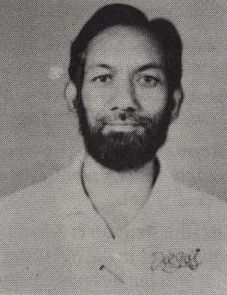
Vijay Kumar Kapahi was an Indian astrophysicist and the director of the National Centre for Radio Astrophysics, an autonomous division of Tata Institute of Fundamental Research. Known for his research on radio galaxies, quasars and observational cosmology, Kapahi was an elected fellow of all the three major Indian science academies – Indian Academy of Sciences, Indian National Science Academy and National Academy of Sciences, India – as well as of the Maharashtra Academy of Sciences. The Council of Scientific and Industrial Research, the apex agency of the Government of India for scientific research, awarded him the Shanti Swarup Bhatnagar Prize for Science and Technology for his contributions to physical sciences in 1987.


















